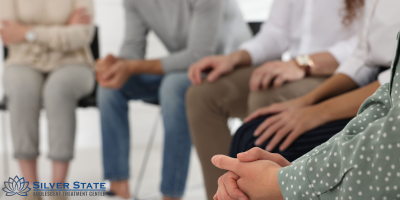How Youth Residential Treatment Centers Address Flakka-Induced Aggression

Table of Contents
Key Takeaways
- Youth residential treatment centers offer a safe place for teens who are acting aggressively because of Flakka and provide them with a lot of care.
- Synthetic stimulants like Flakka can cause severe paranoia, aggression, hallucinations, and long-lasting psychosis.
- For long-term recovery, specialized residential treatment combines trauma-informed care, dual diagnosis treatment, and behavioral therapy.
- To stop more neurological damage and behavioral problems, early intervention in a controlled therapeutic setting is very important.
Introduction
Flakka, or alpha-PVP, is an artificial drug that is known for having terrible effects on the mind, such as aggression, delusions, and strange behavior. Flakka use is especially concerning among teens because it can interfere with brain development and make existing trauma worse. This is where youth residential treatment centers come in. They provide a safe, integrated place for young people who are dealing with substance-induced psychosis and violence. Young people who use synthetic drugs don’t always have the coping skills, emotional maturity, and structured support systems they need to get better, unlike adults. Trained professionals can help young people with their chemical addiction and the psychological, behavioral, and emotional roots of the problem in a safe, therapeutic setting at youth residential treatment centers. When it comes to Flakka, this kind of care is not only helpful but also necessary for survival and long-term healing. 
Why Is Flakka Use So Dangerous for Teens?
Flakka has strong effects because it is a synthetic cathinone that overstimulates the central nervous system. Teenagers’ brains are still developing, especially the frontal lobe, which plays a crucial role in controlling impulses and making decisions. This hyperstimulation can cause violent outbursts, paranoia, and psychotic symptoms that last for a long time. Flakka use can lead to long-term psychosis, suicidal thoughts, memory problems, and repeated aggression, making it one of the most harmful synthetic drugs that doctors see. In terrible cases, Flakka-induced psychosis can last for weeks or even months, and the person will need ongoing psychiatric care. Residential care is critical here, not just for detox and crisis stabilization, but also for long-term behavioral and emotional rehabilitation. Nicholas Crespi’s case study in Case Reports in Psychiatry found that a young patient with Flakka-induced psychosis had paranoia and delusions that didn’t go away even after they stopped using the drug. They needed constant psychiatric care (Crespi, 2016).
How Do Residential Programs Make Treatment Work for Teens Who Have Flakka?
Youth residential treatment centers provide structured, 24-hour care that is tailored to the developmental and mental health needs of teens. These centers employ a multidisciplinary approach that encompasses detoxification services, psychiatric care, evidence-based therapy, and family involvement. One of the most significant problems with Flakka-related aggression is that it is often linked to unresolved trauma and behavioral addictions like gaming too much, having risky sex, or hurting yourself. That’s why a lot of youth treatment programs focus on trauma-focused therapy. Trauma-informed therapies memories that may be making them more likely to be aggressive or use drugs.
What Makes Behavioral Therapy So Important for Treating Aggression Caused by Flakka?
Flakka disrupts a teen’s brain chemistry, making it harder for them to control their emotions, impulses, and sense of danger. Cognitive Behavioral Therapy (CBT) is a common type of therapy used in youth residential treatment centers to help teens see and question the distorted ways of thinking that lead to aggressive and risky behavior. Therapists use Dialectical Behavior Therapy (DBT) to teach mindfulness, how to deal with stress, and how to control your emotions in more serious cases. Another key to success is getting the whole family involved. Many youth programs have weekly family therapy sessions where parents and guardians learn how to help their kids recover, set healthy boundaries, and deal with their emotional wounds, especially when there is trauma or drug addiction in the family. The PubMed also emphasizes the need for comprehensive, long-term behavioral interventions when treating Flakka-related aggression and psychosis (NIH, 2018). In these high-risk cases, short-term care or outpatient services are often insufficient. 
How Do These Places Help People Stay Sober and Avoid Going Back to Drugs?
Improving after using Flakka isn’t a linear process. Because synthetic stimulants are so unpredictable and teens are still growing, relapse is a big worry. That’s why youth residential treatment centers put a lot of emphasis on planning for long-term recovery through transitional programs and aftercare support. After the young person leaves, many centers stay in touch with their families and outpatient providers to ensure they continue to receive the right help. Peer recovery groups can help individuals get back into school, and programs for alumni are also essential for maintaining progress. The goal is to help people become more resilient and learn skills that will lower their chances of relapsing, whether it’s Flakka or another drug.
How Can Youth Residential Treatment Centers Help Teens Struggling with Aggression Due to Substance Use?
Youth residential treatment centers provide a safe environment for teens struggling with aggression due to substance use. With targeted programs and therapeutic support, these centers offer comprehensive approaches, including counseling and peer interaction. Such environments often include guidance on teen depression treatment options, fostering recovery and emotional stability for adolescents.
Conclusion
Flakka isn’t just another fake drug; it’s a neurological time bomb, especially for teens. It can make people act violently and lose their minds, which can ruin lives in just a few days. The effects can last for years if not treated properly. Teenagers and families going through this crisis can get help from youth residential treatment centers. These centers help young people get better and rebuild their lives by giving them medically supervised detox, trauma-informed therapy, family support, and long-term behavioral interventions. Don’t wait if you see signs that your child or loved one is using Flakka or exhibiting aggressive behaviour. The sooner you seek help, the better your chances of a full recovery will be. At Silver State Adolescent Treatment our skilled staff is trained to help teens who use drugs and have other mental health issues in a safe, caring setting. Call us at 725-525-9897 now to speak with an expert and start the healing and hope process.
Frequently Asked Questions
What Are the Signs That a Teen Is Using Flakka?
Some of the symptoms are extreme aggression, hallucinations, strange behavior, delusions, a fast heartbeat, and, in some cases, thoughts of hurting oneself or killing oneself.
How Long Does It Take for a Teen to Get Over Flakka Psychosis?
Depending on the severity, recovery can take anywhere from a few weeks to a few months. Long-term residential care, followed by therapy that takes place outside the home, greatly improves outcomes.
After Flakka Treatment, Can Teens Relapse into Using It?
Yes, relapse is possible, mainly if mental health problems that are already there are not dealt with. That’s why it’s so important to have ongoing support and integrated care.
Is Flakka Physically Addictive or Does It Just Mess With Your Mind?
It can be either. Physical withdrawal symptoms can be different, but the psychological grip, especially hallucinations and paranoia, is firm and lasts a long time.
Resources:
“The Explosion of a New Designer Drug, Flakka: Implications for Practice.” PubMed, U.S. National Library of Medicine, PMID 30507821, https://pubmed.ncbi.nlm.nih.gov/30507821. Brenner, Victoria, et al. “Clinical Characteristics of Youths with Substance Use Problems and Implications for Residential Treatment.” Psychiatric Services, vol. 52, no. 6, June 2001, pp. 793–799. PsychiatryOnline, https://pubmed.ncbi.nlm.nih.gov/11376227. Nicholas Crespi. “Flakka‑Induced Prolonged Psychosis: A Case Report.” Case Reports in Psychiatry, 2016, PMC, https://pmc.ncbi.nlm.nih.gov/articles/PMC4933860.

